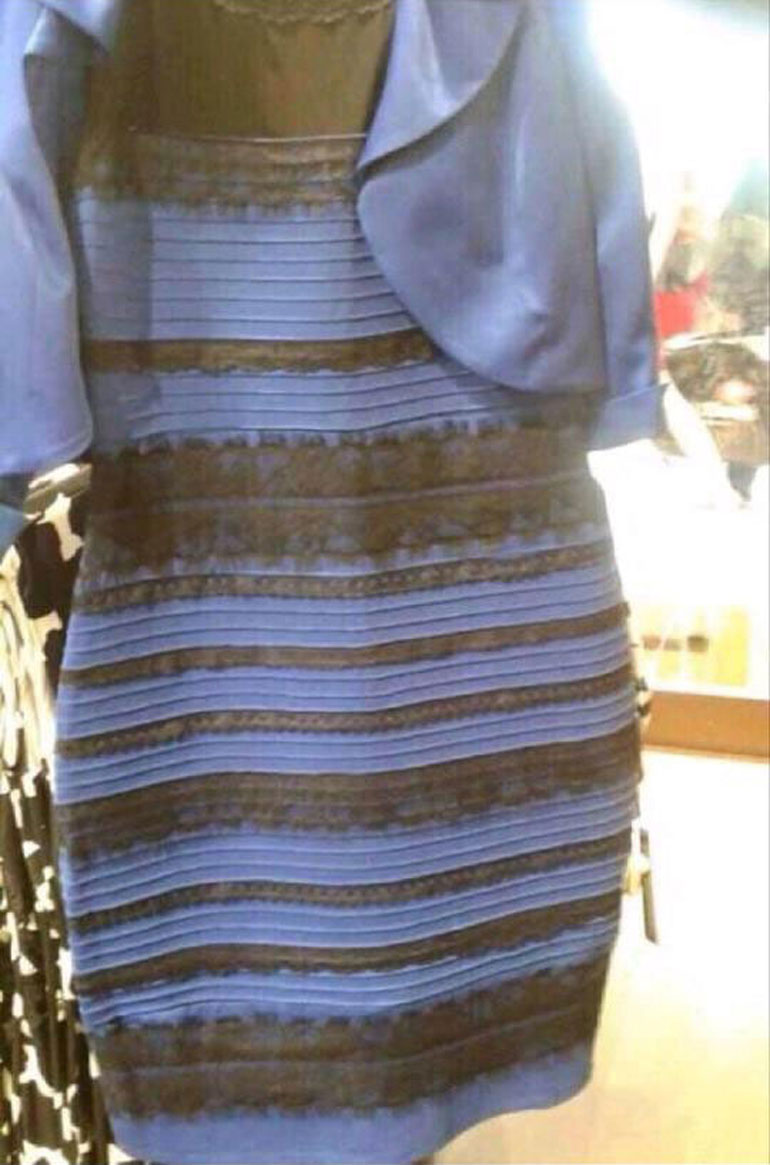By Jordan Biordi and Alejandra Fretes
These are the moments that define us as a generation.
Great moments in human history, where people can put aside petty differences in order to determine what color a woman’s dress is.
Exploding on the internet, going viral as of last night, a picture of a dress posted by Scottish singer Caitlin McNeill with this caption: “guys please help me – is this dress white and gold, or blue and black? Me and my friends can’t agree.”
Since then, the dress has sparked enormous controversy, gaining the hashtag on Twitter #thedress, and splitting the internet in half.
Some see the dress as white and gold, some see it as black and blue.

- The dress that split the internet. (Photo by Caitlin Mcneil via http://swiked.tumblr.com/image/112174461490)
Professor of Neuroscience at Carlton University, Kim Hellemans, said first you need to understand how the brain perceives color. It’s quite complex. Every object that we perceive admits wavelengths. Things our brain perceive as red are objects that emit longer wavelengths of light than things that we perceive as blue. What our brain has to do is recreate the visual world in parts of the cortex.”
Hellemans said, “the other thing that’s important to know is that we’re never looking at objects in the absence of light. We have the role of what’s called the illuminant. Importantly, our brain tends to keep the same colors constant, regardless of the illuminant.”

A prime example of color constancy, square A and B are the same color but appear different through different lighting. (Photo from Wikipedia)
Hellemans said it’s the context that matters.
“What’s happening with this blue and black, or white and gold dress is the function of the context. So some people are pulling it up on their iPhone screens, versus their computer screen, whether you pull it up on Buzzfeed or Facebook, you’re going to get different context in which you’re viewing that dress, so it really is an illusion.”
Hellemans said when you first look at it, it could appear as white and gold, but then you’ll eventually see it as blue and black, and once you see it as blue and black…you’ll never be able to see it as white and gold.”
“That’s the craziness of the brain,” he said.
We took to the halls of Humber College to see what the student reaction to the dress debate was.
The dresses designer has since ended the debate with their tweet:
We can confirm #TheDress is blue and black! We should know! http://t.co/qAeIIHzJxk pic.twitter.com/kkxjUbmgI3
— Roman Originals (@romanoriginals) February 27, 2015

